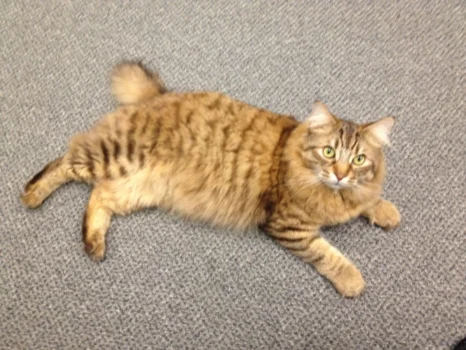So, you’ve just welcomed home an adorable American Bobtail, but now you’re wondering how to train them effectively. Fear not, as we’ve got you covered! Training your feline friend is crucial to ensure they remain healthy, happy, and well-behaved. However, training a cat can be quite challenging, and it requires patience, persistence, and commitment. In this guide, we will provide you with tips on how to train your American Bobtail effectively, from understanding their unique personality and behavior traits to monitoring their progress. So, grab your treats and let’s get started!
Understanding Your American Bobtail
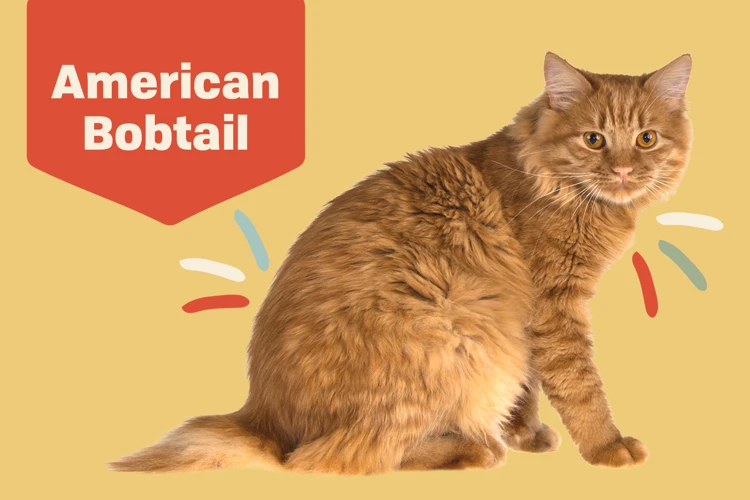
Understanding your American Bobtail is crucial to training them effectively. These charming and lively cats have unique personalities and behavioral traits that make them stand out from other feline breeds. Observing and acknowledging these traits can ensure that you cater to their specific needs during training. In this section, we will delve deeper into the personality and behavioral traits of these adorable creatures and explore ways to communicate with them successfully. Let’s find out what makes them so special that sets them apart from other cat breeds.
1.1. The Personality of an American Bobtail
American Bobtails are known for their charming personality that sets them apart from other cat breeds. These felines have an easy-going nature and are very affectionate towards their owners. They crave attention and enjoy spending time playing with their owners.
Independence: Despite being attached to their owners, American Bobtails are independent and prefer to have their space. They are not the type of cats who will constantly demand attention from their owners. This trait makes them well-suited for owners who work long hours and cannot be around their pets all the time.
Intelligence: American Bobtails are highly intelligent and can pick up training quickly. They excel in tasks that require both physical and mental stimulation. This breed is known for its problem-solving abilities and curious nature. They are capable of using their paws to open doors and drawers, and their intelligence can sometimes get them into trouble.
Playfulness: American Bobtails are playful cats who love to engage in activities that stimulate their hunting instincts. They enjoy pouncing on toys, chasing after objects, and climbing high places. Owners can use this playfulness to their advantage during training sessions.
Easy-going nature: The American Bobtail is a cat that adapts easily to new situations and environments. They enjoy meeting new people and getting acquainted with new surroundings. They have a calm demeanor and are not easily intimidated.
Loud vocalization: American Bobtails have a distinctive voice and can be demanding when they want something. They use a range of vocalizations to communicate with their owners, from a loud meow to a soft purr.
Understanding the personality of your American Bobtail is essential when preparing for training. It helps in identifying the best approach to use when training the cat. For instance, knowing that American Bobtails are independent can help owners avoid punishing their pets when they fail to follow instructions. Instead, using positive reinforcement training techniques will work best for this breed. To learn more about positive reinforcement training for American Bobtails, check out this article.
1.2. The Behavioral Traits of an American Bobtail
American Bobtails have a unique set of behavioral traits that can be challenging to understand for those who have not had experience with this breed before. Here are some of the most common behavioral traits of an American Bobtail that you need to be aware of before starting the training process:
1. High Energy: American Bobtails are very active and energetic cats. They love to run, jump, and play, and they require a lot of exercise to stay healthy and happy. If you’re looking for a calm and sedentary cat, an American Bobtail may not be the best choice for you.
2. Strong Hunting Instinct: Like most cats, American Bobtails have a strong hunting instinct. They love to chase and play with toys that simulate prey, and they may also be interested in birds and rodents that they come across. It’s important to provide your Bobtail with plenty of toys and interactive playtime to help satisfy this instinct.
3. Affectionate: Despite their high energy and hunting instincts, American Bobtails are also known for being affectionate cats that love to cuddle and spend time with their owners. They are often described as “dog-like” in their personalities because of their loyalty and love for their human companions.
4. Independent: While American Bobtails are affectionate, they are also independent cats that like to do things on their own terms. They may not always be in the mood for cuddles or playtime, and they can be stubborn when it comes to training.
To train your American Bobtail effectively, it’s important to keep these behavioral traits in mind and work with your cat’s natural instincts and personality rather than against them. Understanding your Bobtail’s needs and motivations will also help you to develop a stronger bond with your cat over time.
For more information about the trainability of American Bobtails, check out our previous article, and for tips on socialization training, check out our article on early socialization training. Additionally, if you’re interested in teaching your Bobtail some fun tricks, be sure to read our article on trick training for Bobtails.
1.3. How to Communicate with Your American Bobtail
As a pet owner, it’s essential to have good communication with your American Bobtail. Effective communication builds a strong relationship between you and your kitty, making training easier and more enjoyable. American Bobtails are quite intelligent and have a unique personality, so understanding what your cat is trying to convey is crucial. Here are some ways to communicate effectively with your American Bobtail.
| Method | Explanation |
|---|---|
| Body Language | Use observation to gauge your American Bobtail’s body language, such as ears and tail position, as a means of communication. For example, if your cat’s ears and tail are up, they may be feeling happy and content. On the other hand, if they are flat to the side, the cat is signaling fear, aggression or discomfort. |
| Verbal Cues | American Bobtails are known for being vocal pets, with diverse noises originating from chirps to meows. You should be attentive to your cat’s sounds to comprehend different moods and intentions, such as purring indicating happiness and meowing signifying hunger or attention. |
| Reward-based Training | Reward-based training is a great way to communicate effectively with your cat. Use positive reinforcement, such as treats or praise, when your American Bobtail behaves according to your commands. This reinforces positive behavior, making training more comfortable for both you and your cat. |
| Scent | Cats communicate by leaving their scent in various locations around a home. Encourage your American Bobtail to rub against particular objects, such as blankets, to distribute their scent, which gives them comfort and relaxes them. |
Understanding your American Bobtail’s behavior, personality, and communication methods is a vital aspect of training your pet. American Bobtails have unique qualities, making them different from other felines. It’s essential to know precisely how to communicate with them properly. Employing these communication methods strengthens the bond between you and your pet, making the training process easier for both of you.
For more information on how American Bobtails compare to other felines, read our article “American Bobtails vs. Other Felines: What Makes Them Stand Out?”
Preparing for Training
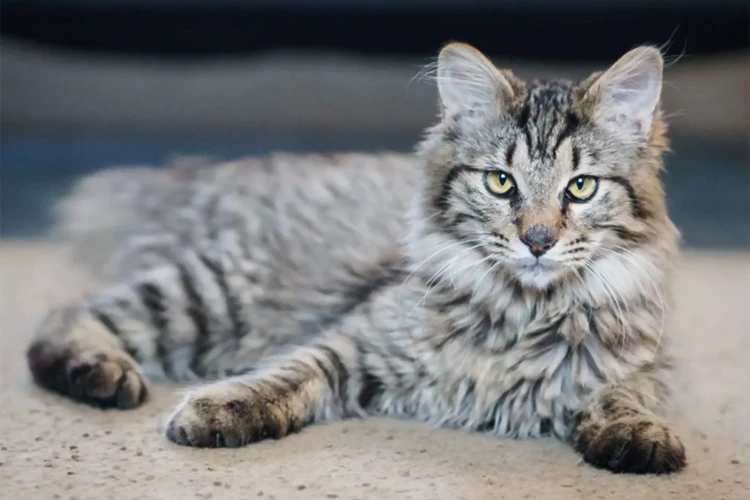
As you begin to think about training your American Bobtail, it’s important to take some time to prepare for the process ahead. This will require some thought and planning, as well as gathering the necessary supplies to ensure that you and your cat are prepared for success. In this section, we’ll explore some tips and strategies for getting ready to train your American Bobtail effectively. So, grab a notebook and pen, and let’s get started!
2.1. Setting Realistic Expectations
When it comes to training your American Bobtail, it is essential to set realistic expectations to ensure success. Before beginning any training regimen, take some time to assess your cat’s personality, behavioral traits, and attitude, to tailor your expectations accordingly. You can use the following chart to help guide your expectations.
| Expectation | Description |
|---|---|
| Quick Results | Training your American Bobtail takes time, patience, and consistency. Don’t expect overnight results. |
| Perfect Behavior | While it’s tempting to expect your American Bobtail to behave perfectly at all times, this isn’t realistic. Cats, like humans, make mistakes, so don’t expect your pet to be perfect. |
| Professional Performance | While professional cat trainers can teach complicated behaviors, many pet owners cannot. Keep in mind that you are training your cat as a pet, not as a performing animal. |
| Unwavering Focus | While many cats are receptive to training, none are 100% focused all the time. Keep your training sessions brief to ensure maximum focus from your American Bobtail. |
| Strict Training Schedule | Cats don’t always adhere to schedules, so it’s important to keep your expectations flexible. If your cat appears tired or uninterested, take a break and come back to training later. |
Remember, training your American Bobtail should be an enjoyable experience for you and your pet. Setting realistic expectations and adapting them to your cat’s personality can help ensure a successful and pleasurable training journey.
2.2. Identifying Your American Bobtail’s Motivation
Identifying your American Bobtail’s motivation is a crucial part of training, as it can make or break the success of your training sessions. Before you begin training, it’s important to determine what motivates your cat. Some cats may be food-motivated, while others may respond better to playtime or social interaction.
Food-motivated American Bobtails: If your cat is food-motivated, you can use treats as a powerful tool in training. Make sure to find treats that your cat loves and are safe for them to eat. During training sessions, reward your American Bobtail with treats when they successfully complete a task or command.
Playtime-motivated American Bobtails: For cats who are more motivated by playtime, you can use toys as rewards. Identify your cat’s favorite toys and use them to reinforce positive behavior during training sessions.
Social interaction-motivated American Bobtails: Finally, some cats are highly motivated by human interaction. If your American Bobtail falls in this category, use positive verbal reinforcements, petting, or cuddles as rewards during training sessions.
It’s important to note that some American Bobtails may be motivated by a combination of these factors, while others may not be motivated by any of them. Pay close attention to your cat’s response during training sessions to determine what is most effective. Use the table below as a guide to help identify your American Bobtail’s motivation:
| Category | Indicators |
|---|---|
| Food-motivated | Will eagerly approach and eat treats |
| Playtime-motivated | Will enthusiastically chase, pounce, and play with toys |
| Social interaction-motivated | Will seek attention, respond to verbal reinforcement, and enjoy petting or cuddling |
Identifying your American Bobtail’s motivation is just the first step in preparing for successful training sessions. Use this information to tailor your training to your cat’s individual needs and interests. By doing so, you’ll create a positive and enjoyable training experience for both you and your feline companion.
2.3. Gathering All Necessary Supplies
When it comes to training your American Bobtail, you’ll want to make sure you have everything you need before getting started. Here are the supplies you’ll need to gather:
- Litter box: You’ll need a litter box that is big enough for your American Bobtail to comfortably use. Make sure it’s easy to clean and that the litter you choose is safe for your cat.
- Litter: Choose a litter that is comfortable for your American Bobtail to use and that will help control odors.
- Treats: Use treats to reward your American Bobtail for good behavior during training sessions.
- Training clicker: A clicker can be used to help reinforce positive behaviors during training.
- Collar and leash: If you plan on leash training your American Bobtail, you’ll need a collar and leash that are comfortable and secure.
- Toys: Toys can be used during training as a reward for positive behavior and to keep your American Bobtail engaged.
It’s important to remember that the specific supplies you need may vary based on the type of training you plan on doing. Be sure to do your research and gather all necessary supplies before getting started. With the right tools and mindset, you can effectively train your American Bobtail and strengthen the bond between you and your furry friend.
Training Your American Bobtail
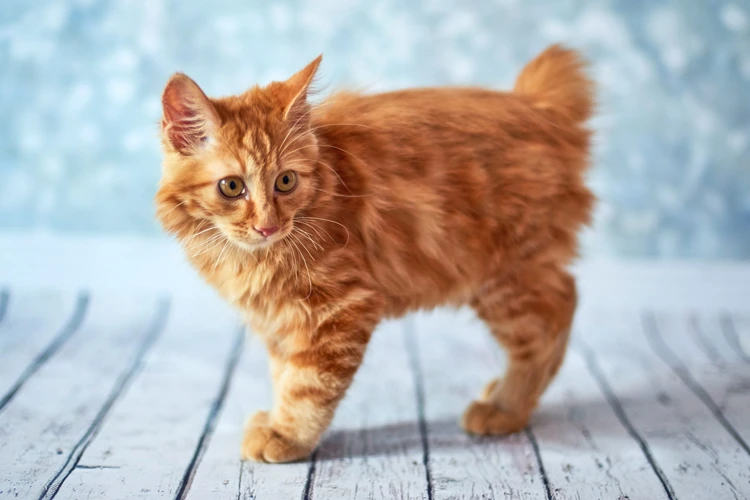
Now that you’ve prepared yourself and your American Bobtail for training, it’s time to dive into the training itself. This is where the real work begins. With patience, persistence, and positivity, you’ll be able to train your furry friend effectively. In this section, we’ll cover the key tips and tricks for training your American Bobtail, from litter box training to obedience training and more. So grab your treats and let’s get started!
3.1. Litter Box Training Tips
Litter box training is an essential step in training your American Bobtail. By teaching them to use a litter box, you ensure that they have a designated area for their elimination needs. Here are some helpful tips to ensure that your litter box training is successful and stress-free:
| Tip | Description |
|---|---|
| Choose the Right Litter Box | Make sure the litter box is large enough for your Bobtail to comfortably turn around in. Additionally, ensure that the litter box is shallow enough for easy entry and exit. |
| Choose the Right Litter | There are many types of litter available in the market, such as clay, silica, and recycled paper. Choose a litter that is dust-free and unscented to prevent any irritation to your Bobtail’s sensitive nose. |
| Location is Key | Choose a quiet and secluded area for the litter box that is easily accessible to your Bobtail. Avoid high traffic areas such as kitchens and hallways. |
| Introduce the Litter Box | Initially, confine your Bobtail to a small area with easy access to the litter box. Encourage them to smell and explore the litter box. If they show interest, place them in the litter box to get familiar with it. |
| Positive Reinforcement | When your Bobtail uses the litter box correctly, praise and reward them with a treat or affection. Positive reinforcement will help them associate the litter box with good behavior. |
| Consistency is Key | Ensure that the litter box is cleaned regularly and litter is changed at least once a week. By maintaining a clean litter box, you are encouraging your Bobtail to use it consistently. |
By following the above tips, you can successfully litter box train your American Bobtail and ensure good elimination habits. Remember to be patient and consistent in your training approach, as every Bobtail is different and may take some time to get familiar with the litter box.
3.2. Obedience Training Tips
When it comes to obedience training for your American Bobtail, it is important to have a clear understanding of what obedience training entails. Obedience training is the process of teaching your cat to perform certain behaviors on cue. These may include coming when called, sitting on command, or walking on a leash. Here are some tips to keep in mind when training your American Bobtail to be obedient:
Table 1: Obedience Training Tips for American Bobtail Cats
| Tips | Explanation |
|---|---|
| Start Young | The younger your American Bobtail is, the easier it will be to train them. Start training as early as possible. |
| Use Positive Reinforcement | American Bobtails respond well to positive reinforcement. Use treats, praise, and toys to reward good behavior. |
| Be Consistent | Consistency is key. Use the same commands and rewards every time, and train in short sessions regularly. |
| Keep It Simple | Start with simple commands, such as sit and come, before moving on to more complex commands. |
| Keep It Fun | Training should be fun and enjoyable for both you and your American Bobtail. Use toys and playtime to keep your cat engaged. |
| Stay Patient | Training a cat takes time and patience. Don’t get frustrated if your American Bobtail doesn’t immediately understand a command. |
It is important to note that while American Bobtails are highly trainable, they are still cats and may not respond to training in the same way that dogs do. It is important to approach training with patience, positivity, and a love for your feline friend. With these tips in mind, obedience training can be a fun and rewarding experience for both you and your American Bobtail.
3.3. Tricks and Commands to Teach Your American Bobtail
Teaching your American Bobtail tricks and commands is an effective way to bond with your cat and keep them mentally stimulated. Here are some tricks and commands to teach your American Bobtail:
| Trick/Command | Description |
|---|---|
| High Five | A fun trick where your cat raises their paw and gives you a high five. |
| Roll Over | A more advanced trick where your cat rolls over on command. |
| Play Dead | A trick where your cat pretends to be dead by laying still on their side. |
| Come When Called | Teaching your cat to come when called is a useful command for safety and convenience. |
| Sit | Teaching your cat to sit on command is a great way to get them to stay in one place for grooming or feeding. |
| Stay | This command helps your cat learn to stay in one spot until they are released on command, which can be useful for safety. |
| Fetch | While not all cats enjoy playing fetch, some American Bobtails love it! Teaching your cat to bring back toys can provide mental and physical stimulation. |
When teaching these tricks and commands, use positive reinforcement to reward good behavior. Treats, praise, and playtime can all be effective rewards. Additionally, be patient and consistent with your training sessions, and always end on a positive note. With time and practice, your American Bobtail will become an expert at these tricks and commands.
3.4. Socialization Training Tips
Socialization training is an essential part of raising an American Bobtail. This involves introducing your cat to new people, pets, and environments. Socialization helps American Bobtails feel comfortable in a variety of situations and reduces the likelihood of fear, aggression, or anxiety towards unfamiliar people or animals.
Here are some socialization training tips to help your American Bobtail:
- Expose your American Bobtail to different people and animals early on. This is especially important during the kitten stage.
- Start small and gradually increase exposure. Begin by introducing your American Bobtail to one person or pet at a time and in controlled environments.
- Use positive reinforcement. Reward your American Bobtail with treats, playtime, or affection every time they interact positively with a new person or pet.
- Be patient. Don’t force your American Bobtail to interact with someone or something they are uncomfortable with. Allow them to approach at their own pace.
- Use calming techniques. Play soothing music, use pheromone sprays or diffusers, or provide a safe space for your American Bobtail to retreat to if they become overwhelmed.
- Practice obedience training. Training your American Bobtail to follow basic commands can help them feel more confident and in control during socialization experiences.
By following these tips, you can ensure your American Bobtail is well-socialized and able to handle a variety of situations. Remember that socialization is an ongoing process, and it’s important to continue exposing your cat to new experiences throughout their life to maintain their social skills.
Common Training Mistakes to Avoid
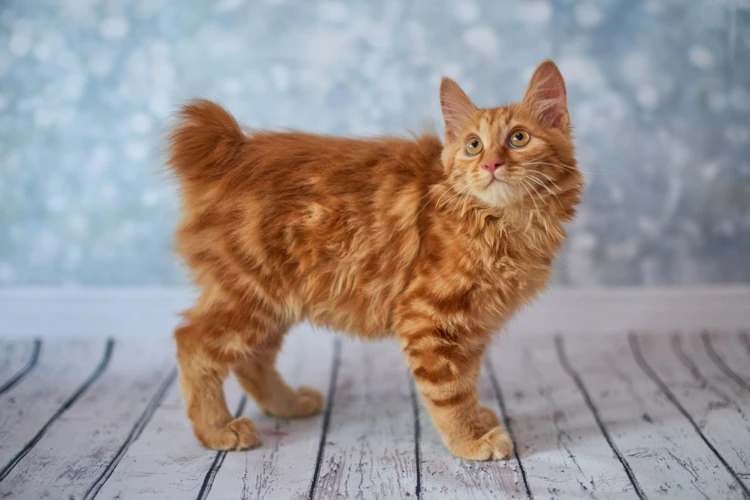
Training your American Bobtail can be a challenging but rewarding experience. However, it’s important to know what not to do when it comes to training your furry friend. Avoiding common training mistakes can help ensure a successful training experience. In this section, we will explore some of the mistakes to avoid while training your American Bobtail, so you can make the most out of your training sessions and avoid any setbacks. Let’s dive in!
4.1. Punishing Your American Bobtail
It’s important not to punish your American Bobtail during training. Punishing your feline can lead to fear and aggression towards you, which is counterproductive to the training process. Physical punishment, such as hitting or spanking, should never be used as a form of correction.
Instead, use positive reinforcement techniques to encourage your American Bobtail to behave appropriately. Rewarding good behavior with treats, praise, or playtime will motivate your cat to continue the behavior.
If your American Bobtail misbehaves, redirect their attention to a more appropriate behavior rather than punishing them. For example, if your cat scratches the furniture, redirect them to a scratching post and reward them for using it.
It’s also important to remember that cats have a short attention span, so punishment after the fact will not be effective since they won’t understand why they are being punished. Only correct your American Bobtail during the behavior you wish to correct.
Punishing your American Bobtail during training is counterproductive and can lead to fear and aggression. Use positive reinforcement techniques and redirect your cat’s attention to more appropriate behaviors.
4.2. Inconsistency in Training
Training your American Bobtail requires consistency in your approach. Inconsistency in training can make the process longer and more difficult for both you and your cat. To avoid this common training mistake, keep the following points in mind:
- Stick to a Schedule: Training sessions should be held at regular intervals for it to be effective. Skipping training sessions or spacing them too far apart will only confuse your cat and hamper its progress.
- Use Consistent Commands: Use the same words and tone of voice when giving commands. Varying your commands or using different words can confuse your cat and make it difficult for it to understand what you want.
- Consistency in Reinforcement: Positive reinforcement is the most effective way to train your cat. Be sure to reward good behavior consistently and immediately. If you only reward your cat sporadically, it will not understand what behavior it is being rewarded for, and training will take longer than it should.
- Enforce Consistent Rules: Your American Bobtail should be taught what it can and cannot do. If you let your cat perform a behavior one day and punish it for the same behavior the next day, it will only confuse your cat and make it harder to train effectively.
Remember, consistency is key to effective training for your American Bobtail. Stick to a schedule, use consistent commands, reinforce good behavior consistently, and enforce consistent rules. By following these guidelines, you can help your American Bobtail learn quickly and effectively.
4.3. Neglecting Your American Bobtail’s Needs
Neglecting your American Bobtail’s needs during the training process can hinder their progress and create a negative association with training. It is important to ensure that their physical and emotional needs are met before and after training sessions.
Physical needs that should never be neglected include providing fresh water, nutritious food, and playtime. American Bobtails are an energetic breed, and regular playtime can improve their physical health and provide mental stimulation. It is also important to take your cat to a veterinarian regularly to make sure they are healthy and up to date on all vaccinations.
Emotional needs are just as important as physical needs. American Bobtails are affectionate cats and enjoy spending time with their humans. If your Bobtail is acting uninterested or uncooperative during training sessions, it may be a sign that they are feeling neglected or not receiving enough attention. Spending time with your cat outside of training sessions can strengthen your bond and motivate them to participate in training.
In addition to meeting their physical and emotional needs, it is important to make sure their training sessions are not too long or strenuous. Overtraining can lead to burnout and make them less responsive to future training. Keeping training sessions short and consistent can help your American Bobtail stay engaged and make progress.
Neglecting your American Bobtail’s needs can lead to a lack of trust and a negative association with training. By prioritizing their physical and emotional needs and keeping training sessions short and consistent, you can create a positive and successful training experience for both you and your feline companion.
| Physical Needs | Emotional Needs |
|---|---|
| Fresh water – Provide your American Bobtail with clean fresh water every day. | Bonding time – Spend time with your cat outside of training sessions to strengthen your bond. |
| Nutritious food – Feed your cat a nutritious diet to keep them healthy and energized. | Affection – American Bobtails are affectionate cats and require love and attention. |
| Playtime – Regular playtime can improve your cat’s physical health and provide mental stimulation. | Attention – Uninterested or uncooperative behaviors may indicate a lack of attention. |
| Veterinarian visits – Regular trips to the vet can ensure your cat is healthy and up to date on vaccinations. | Trust – Neglecting your cat’s emotional needs can lead to a lack of trust. |
Monitoring Your American Bobtail’s Progress
As you dedicate time and effort towards training your American Bobtail, it’s important to monitor their progress and make adjustments as needed. You want to ensure that you are on the right track and that your cat is responding positively to the training. In this section, we will discuss ways to track your American Bobtail’s progress, measure their success, and keep a record of your training sessions. By doing so, you can ensure that your training efforts are effective and that your American Bobtail is on the path to becoming a well-behaved and happy feline companion.
5.1. Measuring Your American Bobtail’s Success
As you train your American Bobtail, it’s important to measure their success and progress to ensure that your training efforts are effective. Here are some tips for measuring your American Bobtail’s success:
1. Consistency in Behavior: Observe your American Bobtail’s behavior regularly to track their consistency in the trained commands and behaviors. Make a list of their improved behaviors and check for them frequently.
2. Performance Accuracy: To measure your American Bobtail’s success, you should look for the accuracy and precision in the execution of commands. If your American Bobtail can perform the commands with precision and minimal mistakes, then you can consider it a success.
3. Improved Confidence: Keep track of your American Bobtail’s confidence levels in performing the commands. If they are comfortable and confident in their execution, this is a positive sign of progress and success.
4. Reduced Errors: Pay attention to the reduction in errors made by your American Bobtail during training. The more successful they become, the fewer mistakes they’ll make.
5. Increased Independence: If your American Bobtail can perform the trained behaviors and commands without your help, it’s a sign that they are becoming more independent and confident. This is a positive sign of progress and success.
By monitoring your American Bobtail’s progress using these metrics, you can determine how effectively your training techniques are working and make any necessary adjustments to improve their success rate. Remember, every cat is different, and patience and consistency are key in helping your American Bobtail reach their full potential.
5.2. Documenting Your Training Sessions
Tracking the progress of your American Bobtail’s training is crucial to ensure that you are making the most of your efforts. One way to do this is through documenting your training sessions. By keeping a record of your training, you will be able to see your American Bobtail’s progress and make improvements to your training routine.
To document your training sessions, start by keeping a training journal or log. In this journal, you can record the date of the training session, what activities you did, and your American Bobtail’s response to them. Be sure to note any successes, setbacks, or areas that need improvement.
Here are some essential things to include in your training journal:
- The date and time of the training session
- The duration of the session
- The specific activities you worked on, including the commands or tricks you practiced
- A record of your American Bobtail’s response and progress during the session
- Any issues or problems that arose during the training session
- Your observations and ideas for improvement
You can also include some relevant details about your American Bobtail’s behavior or mood on that day, as this could impact their performance during the session. Having this journal will help you track your progress and adjust your training methods, as needed.
Taking videos and photos during your training sessions is another excellent way to document your progress. Capture your American Bobtail’s reactions to different commands or activities and review them later to see what worked well, and what needs improvement. You can take notes on the videos, so you have a visual record of the training process.
Documenting your training sessions is a valuable tool for monitoring your American Bobtail’s progress, making adjustments, and celebrating successes. By keeping a training journal and taking videos and photos, you can make the most of your training efforts and achieve success faster.
Conclusion
In conclusion, training your American Bobtail can be a challenging but rewarding experience. By understanding your cat’s personality and behavioral traits, you can communicate with them effectively and set realistic expectations for training. Identifying your cat’s motivation and providing them with the necessary supplies can also make the training process smoother.
During the training process, it’s important to avoid common mistakes such as punishing your cat, being inconsistent with training, and neglecting their needs. Instead, focus on positive reinforcement and socialization to create a strong and positive bond with your American Bobtail.
Monitoring your cat’s progress is also crucial in measuring their success and documenting their training sessions can help you keep track of their progress over time.
Overall, training your American Bobtail requires patience, dedication, and a willingness to understand and communicate with your cat. With the right approach, you can build a strong and lasting relationship with your furry friend and enjoy a happy and healthy life together.
Frequently Asked Questions
1. What is the typical personality of an American Bobtail?
American Bobtails are known for being social and affectionate cats that enjoy spending time with their owners. They are also playful and active, which makes them great pets for families with children.
2. How long does it take to train an American Bobtail?
Training an American Bobtail can take anywhere from a few weeks to several months, depending on the cat’s personality and the consistency of training.
3. Can American Bobtails be easily trained?
American Bobtails are intelligent and trainable cats, but they can be stubborn and independent at times. This means that they may require more patience and consistency during training.
4. What supplies do I need to train my American Bobtail?
You will need supplies such as a litter box, high-quality cat food, treats, toys, a scratching post, and a clicker (if using positive reinforcement training).
5. How often should I train my American Bobtail?
You should aim to train your American Bobtail for at least 10-15 minutes each day, ideally in short sessions to keep them engaged and motivated.
6. Is it necessary to socialize an American Bobtail?
Yes, socialization is essential for American Bobtails to develop good behaviors and prevent them from becoming fearful or aggressive around strangers or other pets.
7. What are some tricks I can teach my American Bobtail?
You can teach your American Bobtail tricks such as sit, come, stay, high five, and even how to play fetch.
8. How can I measure my American Bobtail’s success during training?
You can measure your American Bobtail’s success by monitoring their progress in achieving the training goals you have set, such as litter box use, obeying commands, or socializing with new people or pets.
9. What is positive reinforcement training and how does it work?
Positive reinforcement training involves rewarding your cat with treats, praise, or playtime for exhibiting good behaviors. This method encourages your cat to repeat the behaviors that lead to rewards and helps build a strong bond between you and your cat.
10. Can punishment harm my American Bobtail’s training progress?
Yes, punishment can harm your American Bobtail’s training progress by instilling fear and making your cat feel threatened or stressed. This can lead to improper behaviors and make training more difficult in the long run.

